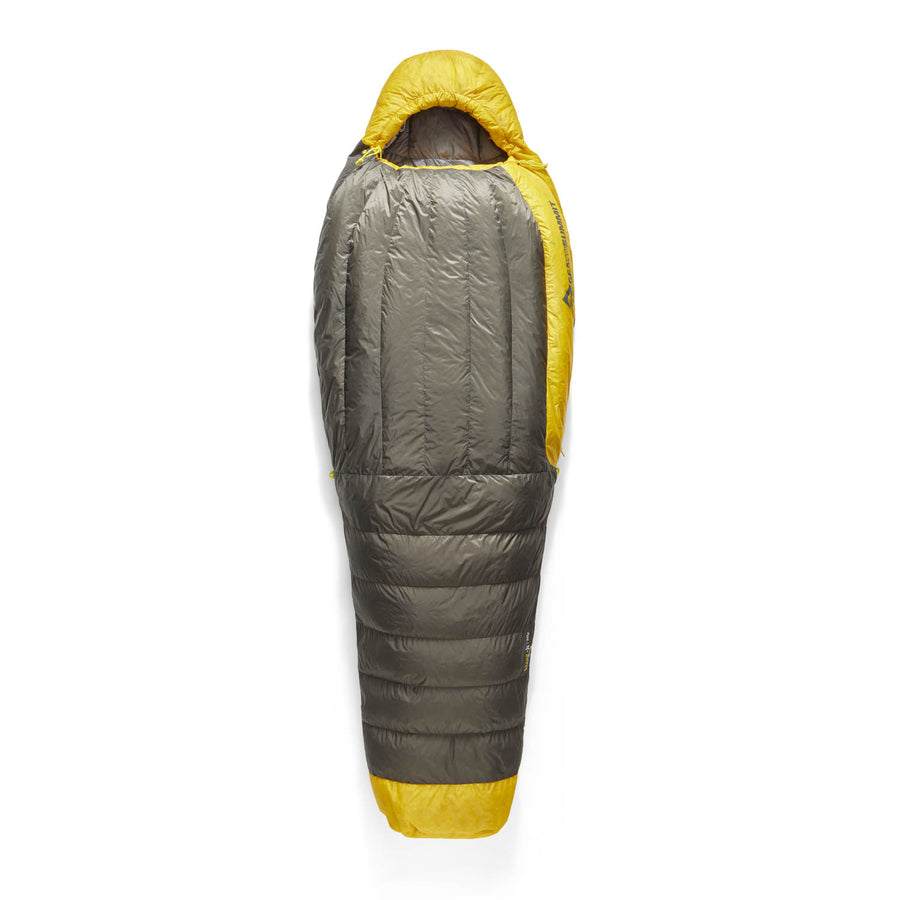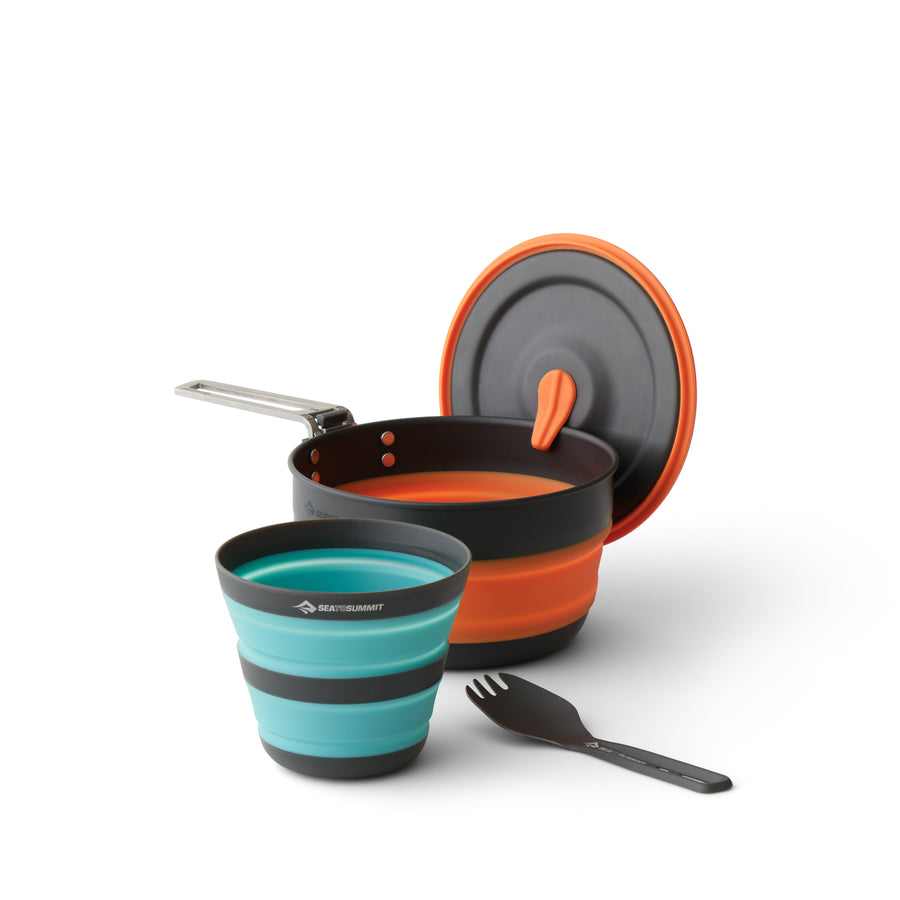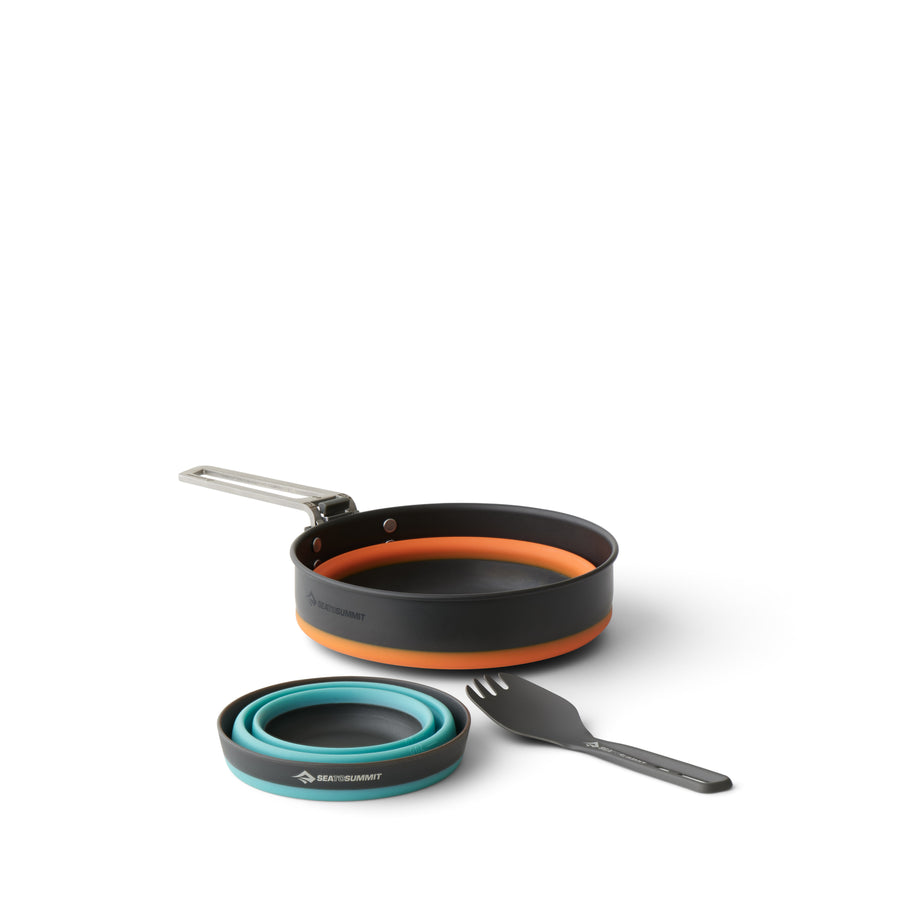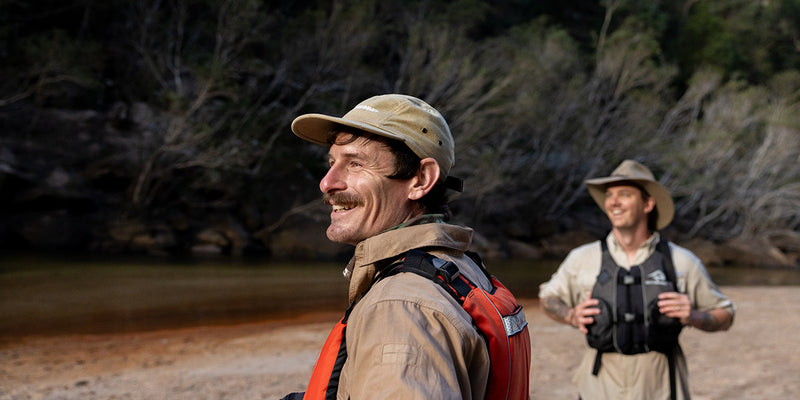Into the deep end—my first 400km of the Te Araroa Trail

Usually for the beginning of a thru-hike, it’s recommended that you start slow—just a few short hiking days to let your body get used to it. But the Te Araroa throws you straight into the deep end, with the infamous ninety-mile Beach.
With 30km between campsites along shifting sand, it’s a sure-fire way to let people know if they can hack it. Survive the beach, survive the hike.
I thought about this as I shuffled off the dunes on my third day towards the holy grail of the Te Araroa—a campsite with a hot shower.
Everything ached. My feet could only move forward a few centimetres at a time. I knew the camp was just over the hill and I could sit down soon, but nothing would make my body move faster than it was.
Three days of endless beach walking had taken its toll. I made it into camp and saw a small group of people sitting around bonding over the ongoing pain of ninety-mile beach. A cheer went up when they saw me trudge into camp. The trail angel—what we call the people who open their homes to us hikers— laughed when he saw me.
‘The TA has already thrown a thousand things my way, and it’s going to throw a thousand more before the end.’
‘Here’s the giant of the TA with the smallest pack,’ he boomed. I laughed with him as I let the weight of my large red backpack slide off my 4’11” frame and fell into a chair.
Muscles I didn’t even know I had, burned. My hip joints ached from walking on a slight angle for three days. My feet were tired. I’d never pushed my body in such a way as to notice even the smallest changes to the muscles in my feet. Walking on flat sand for 70km is very different to walking up mountains. I wondered if it was only me, the person who hadn’t trained, that was dealing with this kind of pain. But every other hiker I met all had their own physical battles—blisters, shin splints, sunburn. I wasn’t alone.

That was the only day so far that I questioned whether I can finish this hike. My hips were sore in a way that I worried I might cause injury if I kept going. I needed a rest day. Luckily, there was a town I was heading towards. A town with pizza, coffee, chocolate—all the things a hiker dreams about. If I had to take a ‘zero day’ for my joints, I wanted it to be where the pizza was.
I struggled to strap my pack around my swollen, red hips. I struggled to start walking through the pain. I just had to make that last 31km. Another eight hours of windy beach. Another day of filling up my water from the small streams leading into the ocean. One more day eating slightly sandy tuna on crackers.
‘I’ve met several people who have already had to pull out, hopefully to attempt it later. They hadn’t mentally prepared themselves for what the hike would be.’
I decided to take an ibuprofen to get me through the last few hours. It worked a little too well. The pain disappeared and I powered along, even hitting a pace of 6km an hour at the beginning of the day. I made it to Ahipara, the 100km mark of the trail (and the end of that damn beach), mostly intact—minus one toenail I killed along the way.
Since that painful beginning, I’ve passed a few more milestones and it’s gotten easier and easier every kilometre I’ve walked. I’ve slogged through the muddiest forests, outwitted swooping birds, crossed a river at high tide with my pack balanced precariously on my head and waited out a few terrifying rainstorms (where I lay awake at 4am counting the seconds between lightning and thunder). The TA has already thrown a thousand things my way, and it’s going to throw a thousand more before the end.
From someone who’s not only surviving but thriving on the challenge and beauty of this epic undertaking, here are a few hard-won lessons.

1. Hike your own hike
You may have heard this one before but when you’re on the trail, it really hits home. I’ve met several people who have already had to pull out, hopefully to attempt it later. They hadn’t mentally prepared themselves for what the hike would be. They weren’t ready for the self-therapy sessions that happen when you spend hours alone in your head—or for the reality of how heavy a bag is when it’s carrying everything you need to survive. Even when you have the lightest gear, weight is a mental hurdle.
I’ve met people who started seriously unprepared and are managing it anyway, and I’ve met the absolute pros who have already injured themselves and taken a week off the trail to recover. I’ve met people who are running the trail and I’ve met others like me who are taking the time to smell the roses and have long, slow coffee breaks with a nice view—and who spend so much time taking photos that they don’t get into camp until after sunset. Everyone is hiking their own hike and, so far, I’m loving mine.
2. Eat before you resupply
Hiker hunger is real and can do serious damage to your bank account and pack weight. Somehow, every time I leave the shops I convince myself I definitely need that extra slab of cheese, block of chocolate, ice cream or packet of lollies. I’m still learning this very difficult lesson.

3. Don’t feed the possums
Put your food away properly to stop the possums trying to get into your tent at 2am. One unfortunate hiker got a hole in his tent. I spent a sleepless night myself shining my headtorch at the mischievous thieves. If you have a light handy, put it on. Light dazes them, and they’ll avoid it if they can.
4. Watch where you put your trekking poles
Carbon fibre snaps a lot easier than aluminium when you’re slipping and sliding through muddy forests. Luckily the company I bought mine from are sending out replacements. Carbon fibre tents, however, survive very nicely in those scary thunderstorms.
5. Blisters happen. No matter what.
It wasn’t the sand from the beach that caused my blisters, thanks to my gaiters, but walking through rivers and estuaries. My blister count hit about 12, but they’ve since healed and calloused up. I saved a few by putting flexible, waterproof wound dressings on the hot spot to stop the friction before it turned into a blister. If it’s too late, I pierce the blister, drain it and cover it up before the next day of hiking. None of my blisters have hurt the next day, so this approach is working for me.

I got a handy tip from a hiker to buy stockings as a sock liner, and since then I’ve had no new blisters. I’ll be grabbing a proper sock liner when I hit the next big city, as stockings don’t last.
6. Watch your step
If you trip and fall forward, a heavy backpack has momentum and ends up toppling over you and forcing your head to crunch into the gravel. The bump on my head is healing fast, though. Thanks for asking.
7. Buy your shoes a size larger
Your feet swell when you’re walking on them all day every day. Luckily, my shoes worked out, but I’ve met several hikers who have already had to buy their second pair because their feet expanded so much.
8. Don’t set up your tent poolside
Carefully consider where you set up your tent to avoid waking up in a pool during a rainstorm. It’s a mistake one only makes once (hopefully). Or you can just learn from my mistakes and pitch that tent on higher ground.
9. Just keep walking
Just keep going. That’s it. There’s no time for breakdowns—even if you find yourself trying to navigate tree roots in the dark after a 13-hour day of hiking. It doesn’t matter. One more step, and then another, and you will get where you’re going. It’s simple, really. Just keep walking. Channel your inner Dory and sing it to yourself—just keep walking, just keep walking. What do we do? We walk, walk, walk.
Hiking the Te Araroa has a way of giving you your best day on the same day as your worst. But every kilometre brings a new adventure, and a new lesson. For me, there’s already been many learnt—and there’s going to be plenty more to come.





PIN FOR LATER

FOLLOW LOUISE’S JOURNEY
This is the first of a series Louise will be sharing as she walks the Te Aroroa. Keep an eye out on our social channels and blog for updates.
Read Louise’s story on the Bob Cooper Survival Course.
Read Louise’s story on preparing for the Te Araroa Trail.










![Frontier Ultralight One Pot Cook Set - [3 Piece]](http://seatosummit.com.au/cdn/shop/files/FrontierULOnePotCookSet1P3Piece1.3LPotWithS-BowlandCup_ACK027031-122114_PRIMARY-1200x1200-9c6bd91.jpg?v=1749433473&width=900)
![Frontier Ultralight One Pot Cook Set - [3 Piece]](http://seatosummit.com.au/cdn/shop/files/FrontierULOnePotCookSet1P3Piece1.3LPotWithS-BowlandCup_ACK027031-122114_ADDITIONAL_1-1200x1200-9c6bd91.jpg?v=1749433473&width=900)
















